A Perpetual Cycle
On 11 March, in a repeat of many such narratives, a police ‘road opening’ patrol moving along the Sukma-Jagdalpur Highway in Chattisgarh found itself entrapped, inflicted with heavy casualties and nearly two dozen items of their weapons and communication sets looted before the attackers melted away unscathed. Thus, Tongpal is the latest in the chain of blood letting, preceded by Kuankonda Feb 2014 (Dantewara), Tandwa Dec 2013 (Aurangabad, Bihar), Pakur Jul 2013 (Santhal Pargana), Jheerum Ghati May 2013 (Sukma), Barha Dumania Oct 2012 (Gaya), Silda Camp Feb 2012 (Midnapur), Narayanpur (Jagdalpur) Jun 2010, Chintalnar May 2010 (Dantewara), Saranda (Jharkhand), Sundergarh (Gadchiroli, Maharashtra), Beliamela (Malkangiri, Odisha), ..... , the list is endless as one goes back in time.
This is the latest among a stream of outrageous incidents which have become an ever incessant slander that the nation’s conscience is subjected to, and another rudely administered affront for those among the nation’s leaders, who cannot avoid having to make a show of breast-beating, and having fulfilled that obligation, get on with their routine of the mundane. Thus, the state’s reaction, in keeping with its Hippocratic subterfuge, was emphatic: it “condemned” the “brutal killings” and thundered the earth shaking verdict, “violence will not be tolerated!. Apparently, it is hoped that the Maoist insurgents have been severely chastised thus – till they choose to strike again.
Not to be left behind, many papers published articles which after summarising the incident, went on for the nth reiteration of the follies the dead policemen had apparently undertaken to commit. Meanwhile, the class of ‘high priests’ ensconced in the Government establishment continue to attend to their foremost engagement – procrastinating and nurturing own turf – while fumbling through organised police martyrdom.
The Situation
During the past two years, the State Government has undertaken to re-establish its presence in areas which had been taken over by the Maoists. Accordingly, strengthened police posts (one company plus or two company size Operating Bases – COPs) have been established at key locations to deny free run of the insurgents. Policing is carried out by contingents made up of a company of Central Armed Police Forces (CAPF) personnel, a platoon or so from the State’s armed constabulary battalions and a few of the district police personnel who are vested with police powers of arrest and investigation. From the ‘grid’ of bases, patrols are sent out to dominate road axes and settlements located in the intervening spaces. Forays into the forested hills stretching yonder are launched but once in a while for which additional forces are built up, guides and informers arranged and helicopters deployed. During these operations, the insurgents abandon their hideouts, only to return once the forces have passed over. Even then, these operations have much value in terms of terrain familiarisation, training and confidence building, besides showing the Maoists their place.
Not having the confidence of engaging in frontal confrontation with these forces, the Maoists are constrained to keep off the police beat. That dilutes their ‘rule’ over their domain besides affecting their ‘levy collection’. Thus they find this ‘intrusion’ of the ‘anti-proletariat enemy’ into the areas that had been heretofore under their control, as an act of bourgeois hostility. That in the coming days the Government has it in its mind to extend such intrusions deeper into their ‘liberated’ areas, makes their future even more threatened. Obviously therefore, Maoist insurgents find it compelling to contest the intrusion and so protect their ‘revolution’. Thus in line with Mao Zedong’s teachings to keep the ‘enemy’ on the tenterhook, leaders of the insurgency remain ever on the lookout for an opportunity to hit hard, kill policemen and loot their weapons and ammunition – before scooting from the scene to the safety of their jungle camps. In this they are encouraged by the fact that in no instance ever, the police have been able to react and decimate the attackers by immediate counter-action.
Here it may also be pointed out that during the past two years or so, a number of deliberate counter-Maoist operations have been undertaken jointly by the Central Reserve Police Force (CRPF) and the State armed police battalions like the ‘Greyhound’ of Andhra Pradesh, ‘C 60’ of Maharashtra, ‘Jaguar’ of Jharkhand, etc. In half a dozen or so such operations, the insurgents have been worsted. But the frequency of such successful operations is not enough to make a mark.
A Road to Death
The Sukma-Jagdalpur area in the southern part of the State of Chattisgarh is situated astride the Indravati and Sabri River Valleys which form part of the Godavari River Basin; besides, there are numerous perennial and seasonal streams. The Kangar Reserve Forest spreads between the Sukma township to its South and Jagdalpur town to its North, the latter being an old and well established town situated amongst lakes, streams and a rich reservoir of rare minerals. The forest is interspersed with settlements few and far between and the vegetation varies between thick to moderate in patches, the stretches astride the road generally having sparse cover. This is a remote region, undeveloped in terms of surface communication, and having been left out of the state’s contention, lies enclosed within a Maoist dominated perimeter that is bounded by Narayanpur and Amravati Ranges to the North, Raigada and Koraput to the East, Malkangiri to the South and Bijapur to the West, Jagdalpur being at its middle - presently the hottest ‘Red’ area, so to say. Incidentally, the Maoist ambush of the political convoy at the Jheerum Ghati (Darba) on the Sukma-Jagdalpur Highway in May 2013 had taken place just 13 odd kilometres to the North of Tongpal village, the site of the latest attack. That spot however is on a hilly, winding and thickly forested stretch of the road – an ideal site for ambush. That is not the case in this instance.
The highway – a road actually - connecting the neighbouring district headquarters of Sukma and Jagdalpur cuts through the Kangar Reserve Forest to connect the townships of Sukma and Jagdalpur. Tongpal is a village situated 43 kilometres North of Sukma astride the road to Jagdalpur which is further 52 kilometres to the North. The road has been resurfaced recently under the ‘Special Infrastructure Scheme’. An armed contingent of 30 CRPF and 14 State armed police personnel had taken off to ‘open’ this road to reach a spot North of Tongpal village where the Maoists had burnt down some lorries for non-payment of ‘levy’. The village is bounded on its North, West and South by the Kangar Reserve Forest. The forest astride the road has sparse to moderate vegetation density, mostly the former, so much so that the forest perimeter is mostly distinguishable not by dense tree-lines, but by cultivations on its fringes. As Tongpal is approached, the road enters into the forest area, then emerges from it into the Tongpal settlement, and after four odd kilometres enters into a thicker and uninhabited part of the Reserve Forest till it flows into the Jagdalpur plains, 30 kilometres away.
The incident followed what is by now a more or less formally scripted sequence of events. As the patrol passed by a moderately closed stretch of the road to walk into a sparsely wooded one, insurgents hidden behind trees on either flank let loose a hail of fire on the column. This stretch has sparse vegetation on its East while there are cultivations on its West. There is a canal about 100-150 metres to the West of the fields, beyond which a stream flows a further 200-500 metres to the West. Thus, while the attackers could use the cover of clump of trees on either flank to take the patrol by surprise, open fields, the canal and the stream running alongside the road exacerbated the patrol’s vulnerability. Thus caught on the open road and exposed by the clearing around, the patrol could do little beyond firing back and run to take what cover they could find from ground undulations. While the troopers fired back and withdrew, 15 including one civilian of the party of 44 were killed and 20 odd escaped with injuries. Twenty odd weapons and radio sets were looted, besides of course the watches, money etc., before the attackers melted away unhindered and untraced – once again.
Noticeable Matters
The purpose of describing the terrain and the incident in some details is to examine certain matters which have to be taken serious cognisance of. The purpose is to discuss the measures to avoid such one-sided massacres of the state’s forces at the hands of Maoist anti-nationals, till the time the state is fully geared up to take the war to their sanctuaries.
The matters to be taken note of are:-
- It is known that the ‘liberated zone’ in contention is the heart-land of insurgency. Denied control over this area, particularly over the road, the Maoist insurgents are on the lookout for an opportunity to strike back at the police forces.
- It is known that a good part of the Sukma-Jagdalpur Road is prone to ambush from either flank. Unlike the ideal ambush site of Jheerum Ghati, the location of Tongpal attack may not be a text-book ambush site. Yet, the stretch is constricted by the canal and the stream, while the flanks, with cultivations and sparse tree cover, afford least protection from fire. Obviously, the patrol leader was outwitted by the Maoist leader.
- On either flank of the road, the tree density is not so much as to blind the tactical visibility. Reportedly, moments before the fire-attack was delivered, some policemen saw movements of green uniform clad figures hiding behind tree trunks. Trained to avoid marching on road surfaces and to adhere to the field-craft of fanning out on either flank, the patrol did not pay heed to their teachings. Had the appropriate formation of tactical move been adopted, there was little chance of the patrol getting ensnared.
- Once under fire-attack, members of the patrol opted to flee to safety, firing back not to retaliate, but to save themselves. Fourteen personnel were killed and 18 weapons, besides radio sets etc., were looted by the insurgents. Apparently, some of the injured personnel had abandoned their weapons before escaping to safety. Aggressive counter-action was absent.
- The insurgents had adequate time to collect weapons, ammunition etc. before marching away in good order. May be they had their own casualties, but they had ample time to carry them off on their shoulders. Such impunity is an usual narrative.
Right Questions
It is the usual practice to eulogise the martyrs while whispering attribution of the tactical blunders to the dead and barely surviving policemen. There would be a cursory investigation, followed by its reiteration in teaching manuals, and then the case will be closed. The debilitating weaknesses, like the state’s capability to induct forces, track and trail the insurgents, box them in from exterior fringes and intercept them to administer retribution, would remain in void; during the entire course of two decade long insurgency, there has been no instance of infliction of swift punishment upon the attackers. Uncontested so far, the insurgents have no fear, no dent in their motivation. It is therefore not surprising that one sided massacres continue with sickening frequency. Maoist insurgency thrives thus.
Rather than just ascribing the mistakes to the dead and nearly dead, the right questions to ask may be:-
- Are all the personnel the right material for imbibing the training on counter-insurgency? Many times, the manner of tactical action-reaction raises concern as to whether there are many in the CAPF who are unsuited for counter-insurgency training and deployment.
- Should not the leadership selection policies be included in the scheme for modernisation of police forces? There are valid reasons to examine the suitability of the present policy on deputing officers to counter-insurgency forces at company, battalion and direction levels.
- As to whether the present structure of the CAPF is optimally tailored to counter-insurgency role, there may be case to examine if an armed police force dedicated to a plethora of law and order roles is readily morphed into a counter-insurgency force.
Larger Issues
As pointed out, the mishap was followed by the standard responses: show of injured indignation from political leaders and dead-pan comments from officials regarding the coming dispensation of more manpower, equipment, training facilities and of course, higher posts. May be, that is a political compulsion to avoid despondency among the populace and bide time while the state is engaged in the time consuming process of capacity building. But even then, enforcement of remedial measures against the core causes of mishaps must be the top priority. If that requires calling to account those at the top who might have faltered on their responsibility and strict ingraining of tactical discipline into the rank and file - notoriously recalcitrant as these are known to be – so be it. Conversely, the inertness of the state-apparatus makes it most challenging to close the chasm between the following three imperatives of the counter-insurgency mandate:-
- One, a serious resolve of controlling the insurgency;
- Two, committal of resources to build up the capacity to do so; and,
- Three, deliberate planning and effective implementation of the intended strategy.
The truth of the matter is that: one, the intent of controlling the Maoist insurgency remains diluted by vested interests of the political and bureaucratic classes; two, the Centre as well as State Governments do not yet have the required wherewithal at hand to defeat the insurgency within a short period; and three, the political and the police hierarchy is still hopeful that the strategy of postponement, delay, and stoicism, mixed with adoption of incremental measures would be enough to dismantle the Maoist rebellion.
Indeed, in terms of departmental structures, trained manpower and monitoring mechanisms, the States do not possess adequate capability either for execution of the required range of development works or deployment for the full measure of police actions, not even to deliver good governance across the vast expanse of Maoist affected landmass. No doubt, efforts towards the state’s capacity building is at hand, but it will take a long time to build up the right wherewithal, the challenges being in terms of time, budgetary support and lack of basic infrastructure in the undeveloped areas.
Counter-insurgency operations have to grow out of a concept, which in turn must lead to institution of preparatory measures in terms of organisation, tactics, equipment and procedures. This is to be followed up with integration of these assets through test-exercises and then fielding the capability through intimately led and supervised execution. Admittedly, after weaning themselves away from the banal idea that the Maoist insurgency was just a law-and-order problem, the Central and State Governments have instituted many concrete measures towards that process. However, it is evident that the effort is not backed up with the depth of resolve that it warrants. For example, the concept of Unified Headquarters stands vilified by personal ego and turf competition, the intelligence apparatus continues to be afflicted by disorientation and enforcement of operating procedures, posting policies, provisioning for weapons and equipment and the tenets of field craft are treated as mundane, not as exigencies. As a result, even after the elapse of five years from the time the States resolved to institute serious counter-insurgency measures, a situation when the full measure of development work and police action may synchronise to banish the insurgency is yet far away.
Balancing Intent to Ability
One sided mass murder of the state’s law enforcement arm, again and again, with assured impunity of the outlaws, is a condition of abject helplessness that shows the nation in poor light. It encourages the external merchants of proxy war and motivates intransigence among the native rogues. It may therefore be a better option to hold back on the urge for express reclamation of state’s control over areas captured by the Maoist insurgents till the requisite capacity to dominate various areas is acquired over time. Meanwhile, deployment of ‘grid’ or operating bases may be reviewed and the vulnerable ones either strengthened or withdrawn.
Similarly, road or area clearance operations may be organised with overwhelming force that operates in parallel and co-ordinated columns, as indeed it has been successfully done on many occasions before. If that necessitates placing limits on the launch of operations, that may be acceptable as a temporary expediency.
The Tongpal incident provokes certain concerns for the nth time. These are :-
- One, committed enforcement of field-craft and minor tactics. This requires ingraining troops with the right habits, and may be achieved only through strict discipline and aggressive troop leadership. Sadly, that is not the case with the police forces across-the-board. Thus, there is a need to select personnel more carefully and nurture a breed of troop leaders who possess aggressive ethos and tactical wit.
- Two, priority build up of the ability to track, trail, trap and swiftly counter-act against Maoist attacks. Even if the insurgents fleeing after ambush may escape interception, the threat itself - which being absent today fuels Maoist arrogance - would limit their options. Being multi-unit and combined-resource operations, such operations can succeed only if led by those middle and top level officers who have grown up in the troops’ environment rather than the ‘all-in one’ types.
- Three, resuscitation of the State intelligence apparatus. Selection of the right personnel and implant of the long defunct grass-roots information network is needed for that purpose.
As the benediction awaits, it may be wise to tailor the state’s urge of reclaiming control over Maoist affected areas according to its capabilities to do so. It is not wise for the state to be on the losing end of armed confrontations - always.
Published Date: 14th April 2014, Image source: http://static.indianexpress.com

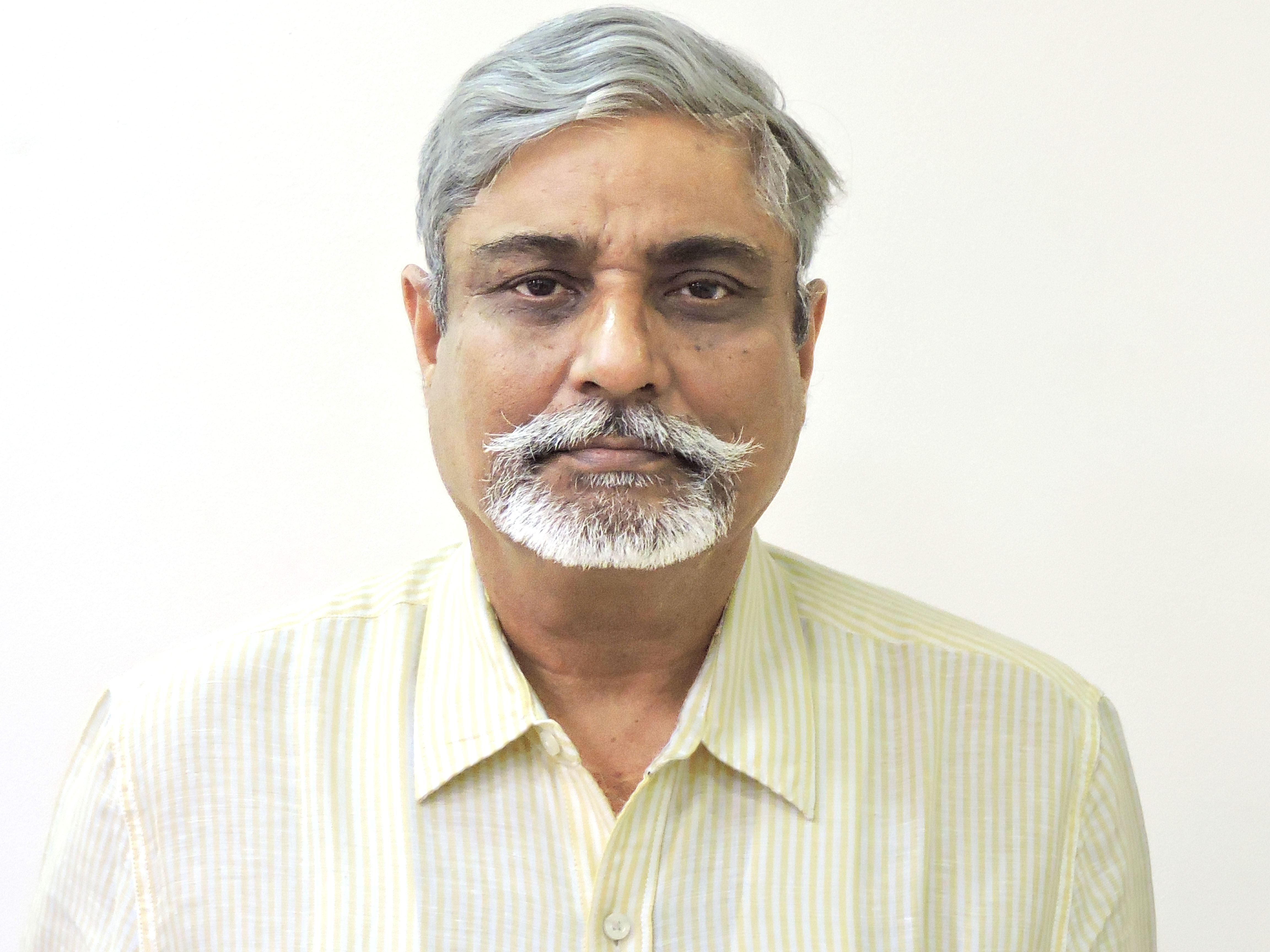


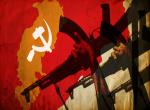
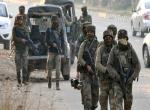
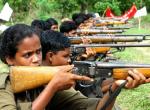
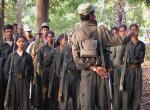
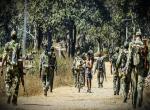
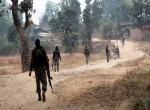
Post new comment